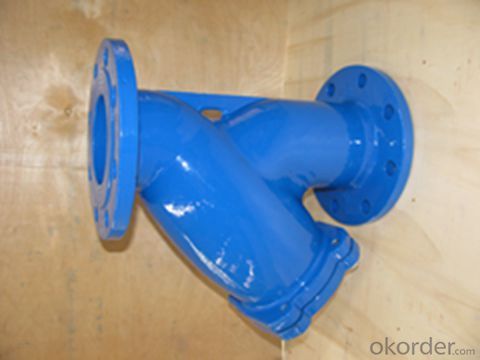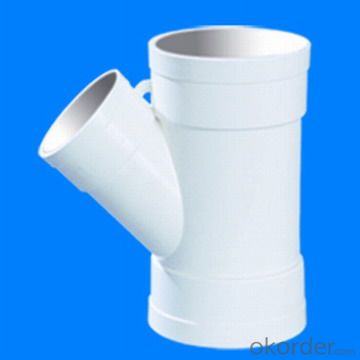Loading Port:China main port
Payment Terms:TT OR LC
Min Order Qty:3 set
Supply Capability:1000 set/month
Since the day pipe was born, fittings were an integral part of it. Today, the water industry is playing an important role in the world economy. And the demand of piping materials is increasing day by day. Xinxing Ductile Iron Pipes Co., Ltd. had developed varieties of ductile iron fittings and is still working on it to develop more types and dimensions to meet the increasing demands of worldwide projects.
2.Main Features
Ductile iron fittings are produced by treating molten low-sulfur base iron with magnesium under closed controlled conditions. In ductile iron, the graphite exists in the form of spheroidal shape, which has little influence on weakening the matrix and resulting in centralizing strain, so ductile iron possesses good flexible property. While, in grey iron, the graphite is present in flake form, which has the effect of cutting the iron matrix and making it become brittle and easy to crack.
3. Images:



4.Specification:
Coating and Lining
The Coating and Lining are made to protect the ductile iron pipe in order to guarantee its long lifetime use. However, the materials are various according to different applications of ductile iron pipe and different soil conditions.
Cement Mortar Lining
Internal cement mortar lining, centrifugally applied as per ISO 4179, BSEN 545 etc.
Other Linings and Coatings
Pipes fittings offer a range of internal lining and external coating systems to suit different ground conditions.
5.FAQ
1. What's are the characteristics of gate valve?
The distinct feature of a gate valve is the sealing surfaces between the gate and seats are planar, so gate valves are often used when a straight-line flow of fluid and minimum restriction is desired. The gate faces can form a wedge shape or they can be parallel.
2. What is the work principle of gate valve ?
The gate faces can form a wedge shape or they can be parallel. Gate valves are primarily used to permit or prevent the flow of liquids, but typical gate valves shouldn't be used for regulating flow, unless they are specifically designed for that purpose. Because of their ability to cut through liquids, gate valves are often used in the petroleum industry.
3. What is the structure?
Bonnets provide leakproof closure for the valve body. Gate valves may have a screw-in, union, or bolted bonnet. Screw-in bonnet is the simplest, offering a durable, pressure-tight seal. Union bonnet is suitable for applications requiring frequent inspection and cleaning. It also gives the body added strength. Bolted bonnet is used for larger valves and higher pressure applications.